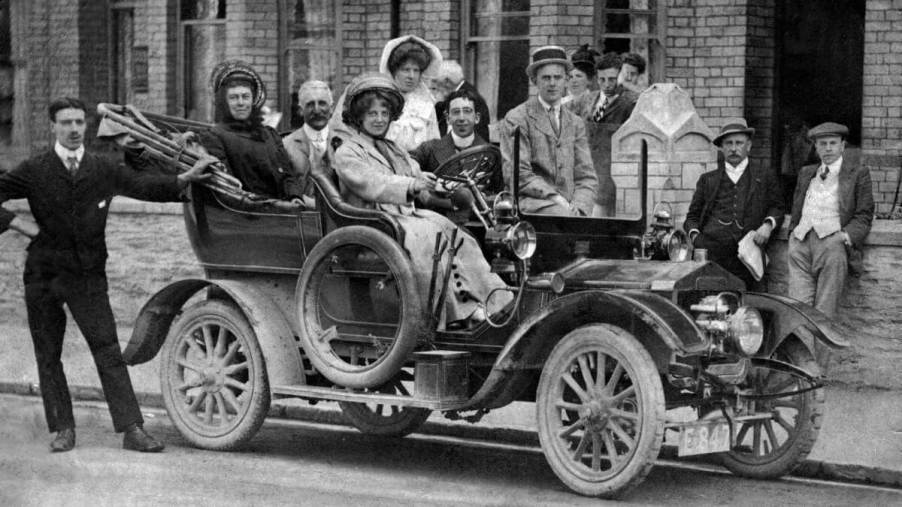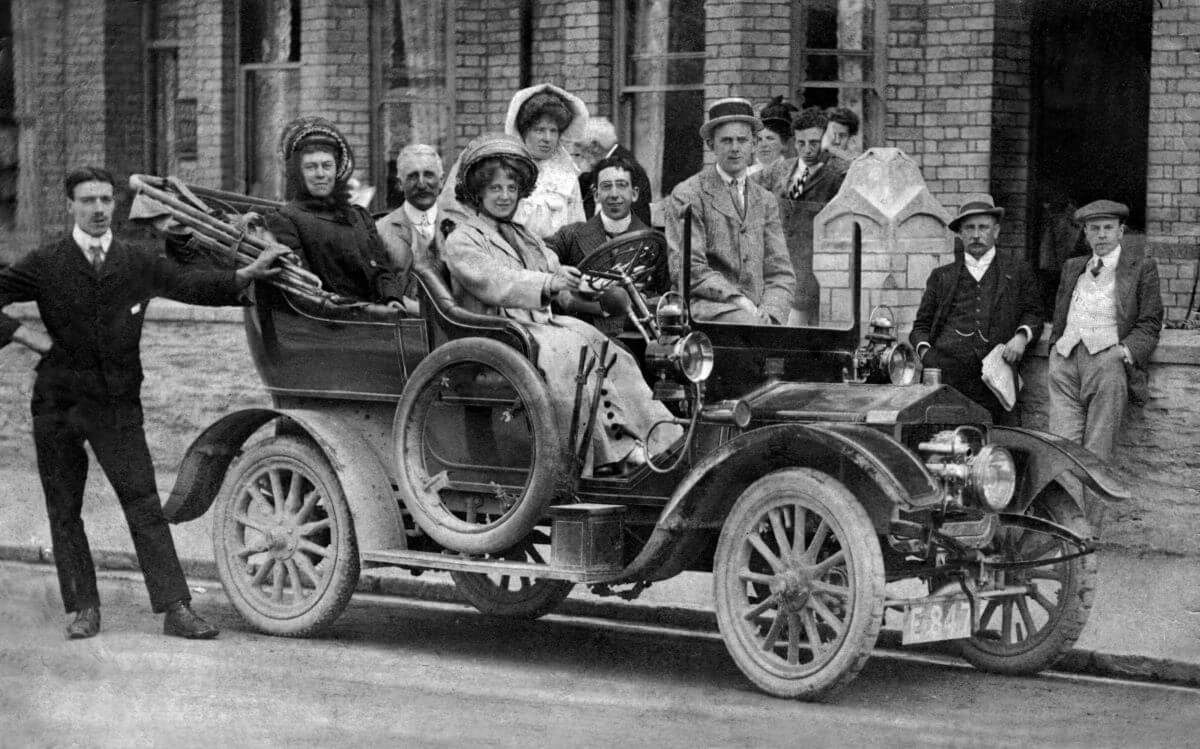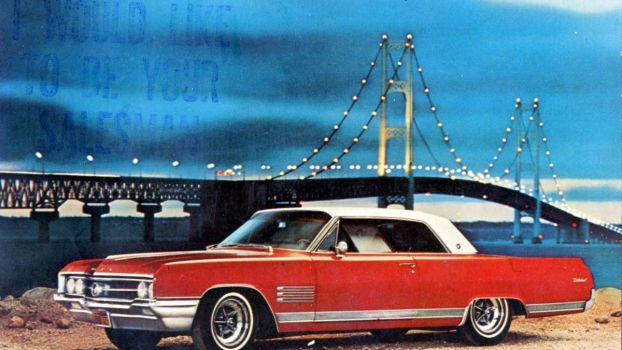
9 Cars Named After Food and Drinks
Car manufacturers look to many sources of inspiration for naming cars, trucks, and SUVs. Volkswagen’s iconic Beetle (often called the Bug) is among the best-selling vehicles ever. Ford has looked to horses for naming a couple of its iconic cars, like the Mustang coupe and Bronco SUV. Others like Ferrari and GMC have looked to places for inspiration with the California and Yukon models, respectively.
However, what about food and drinks? Though not as common a naming convention, they’ve inspired some cars. Here’s a look at nine cars named after food and drinks.
1, Alldays & Onions

Most drivers in 2023 have no idea what an Alldays & Onions was. The English manufacturer made cars from 1898 to 1918. According to Hyman Ltd., Onions was established in 1625 for manufacturing machinery. In 1885, the company merged with William Allday & Co. to make cars over the next two decades.
Per Grace’s Guide to British Industrial History, Alldays & Onions’ first car was the Traveller. With the start of World War I, the company changed focus to work on munitions for the war effort. By the 1980s, the Spire Group had bought out the last remnants of the company.
2, American Chocolate
Another company from the early 20th century, the small American Chocolate brand manufactured cars from 1902 to 1906 under a sweeter food name than Alldays & Onions. Owner and Swiss engineer William Walter began building cars in 1898 using imported parts. A 12-horsepower model was made in 1902 and 1903. The latter year saw another model with 24 horsepower. Power figures jumped up in the last year of American Chocolate’s run with three models on offer: a 30-, 40-, and 50-hp car.
The company relocated from Manhattan, New York, to Trenton, New Jersey, in 1906. It would go on to be rebranded under the name Walter and begin building 4×4 trucks.
3. MGA Developments Hot Dog
The food-based naming convention came much later than the others in the 20th century. According to Jalopnik, the small British MGA Developments company took a Ford Fiesta and made an unusual convertible. It was powered by the 1.6-liter Fiesta engine and generated 110 hp and 138 lb-ft of torque. With a yellow and white body and bright red seats, the hot dog name was very befitting.
4. Mitsubishi Pistachio
Another car with a food name and the first on the list from Japan, the Mitsubishi Pistachio, was a small, limited hatchback built only for the 1999 model year. Its 1.1-liter inline four-cylinder engine produced just 72 horsepower and 74 lb-ft of torque. Luckily it didn’t need much power, with a curb weight of 1,500 lbs, less than half the weight of a modern Toyota Camry.
That low power and weight also made it fuel efficient with very low emissions. Per Mitsubishi archives, the Pistachio also used an automatic stop-go (ASG) system to reduce emissions. The ASG system would kick in while the car was idling. To restart the vehicle, the driver would need to press the clutch pedal. Despite this new technology and fuel-efficient numbers, only 50 Mitsubishi Pistachio units sold in its run.
5. Nissan Cherry
Nissan’s Cherry first debuted in 1970 and launched a nearly two-decade-long run. It was initially branded the Datsun Cherry with a front-engine, front-wheel drive (FWD) setup. According to Nissan Global, the Cherry was the company’s first FWD car and optimized both a small body and lots of interior space. You could get the Cherry in sedan, coupe, or station wagon styles. Two engines were available: the 1.0-liter A10 and the 1.2-liter A12.
According to News24, the Cherry grew very popular in the U.K. and Europe at large. The A10 gave you just 55 hp, but the light and agile characteristics made driving fun. That was also partly due to the four-wheel independent suspension, a system that would later be adopted for sports cars. The last Cherry models were produced in 1986 before the name changed to the Pulsar line.
6. Nissan S-Cargo
Another food-named Nissan makes the list with this funky van from the late 1980s. It was both a reference to the French dish escargot and “small cargo,” the van segment it looked to fill. The S-Cargo’s retro look took cues from older cars like the Fiat 500, Renault 4, and Mini. You could get options like an oval-shaped portal window on the side panels and an electric canvas sunroof.
Inside, things were a bit odd. The gear shifter was mounted on the dashboard, the steering wheel had a single spoke, and the gauge cluster was also placed in the center of the dashboard. If you were reversing, a chime would remind you that’s what you were doing. If you hit 61 mph, another chime would remind you that you’re going that fast, thanks to regulation from the Japanese government. The 1.5-liter four-cylinder powertrain generated 75 hp and 85 lb-ft of torque in a van weighing just over 2,000 lbs.
7. Toyota Corona
After half a dozen food-based naming conventions, the first drinks-aligned car comes from Toyota. It’s one of the longest-running models on this list spanning 11 generations and nearly five decades. It was one of the first Toyota models sold in North America.
The second generation featured upgrades to the suspension, per Toyota Global, and automatic transmission to enhance the driving experience. Though it shares its name with the popular beer, it’s in reference to the Latin word for “crown,” from where the drink also received its name. It was succeeded by the Camry in North America and the Avensis nameplate in Europe.
8. Toyota Crown Royal Series
Another Toyota shares its name with a popular drink, this time with the Canadian whisky. Technically it’s a trim option for the Toyota Crown model, which has been in production since 1955. The Royal Saloon trim was first available for the fourth generation of the Toyota Crown, starting in 1973. This trim included many luxury features like microprocessor-based cruise control, according to Toyota Magazine. It could even give you displays of elapsed driving time and your estimated time of arrival at your destination.
The Crown is popular for multiple uses in Japan. It’s been used by government officials, police cars, and taxis. The Crown was replaced by the Corona Mark II in North America in 1973 but later returned in 2022 to replace the outgoing Avalon full-size sedan.
9. Suzuki Cappuccino
The Suzuki Cappuccino may give the MGA Developments Hot Dog a run for the smallest car on this list. The drink-named tiny hardtop roadster weighed just 1,598 lbs and was slightly under 11 feet long, or roughly two-thirds the length of a modern Ford F-150, according to Hagerty. This put it in the “kei car” category, the smallest vehicle segment allowed in Japan.
The tiny two-seater came with a 0.6-liter, three-cylinder turbocharged engine. Power figures were just 63 hp and 78 lb-ft of torque. However, it’s low curb weight and performance features like a limited-slip differential and all-around independent suspension make it an exciting car to drive. It’ll redline at 9,500 rpm and comes with a five-speed manual transmission. Estimates put a used Cappuccino at around $6,000 if you can find one.
Food and drinks have inspired many car names across multiple segments. Some had longer lifespans than others and are still in production. The likes of the Hot Dog, Cappuccino, and S-Cargo are intriguing pieces of automotive history to enjoy today.



